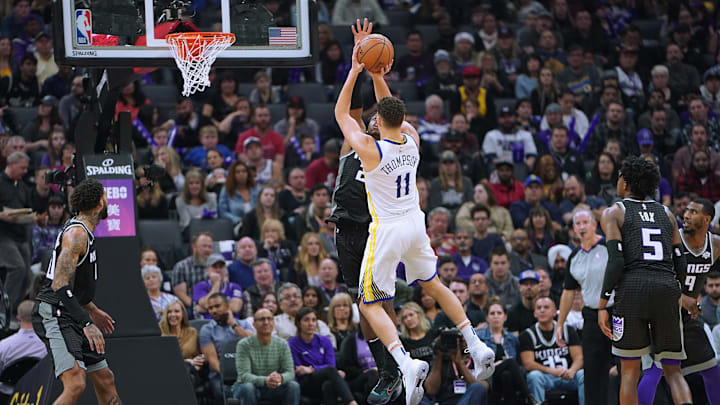Shooting is the spice of life in the NBA, the sweetener that supercharges offensive efficiency, opens driving lanes for creators, taxes a defense and can bust a game wide open. The Boston Celtics just won a title, averaging considerably more 3-point attempts per game than any other NBA Finalist in league history. Other teams are going to be looking to keep pace and shooting will be a key market in NBA free agency.
The rankings below include shooters of all types and positions but I've limited it to players whose primary contribution is shooting. If you're looking for 3-and-D rankings, you can check those out here.
NBA free agent shooter rankings:
Break-in-case-of-emergency
10. Evan Fournier, unrestricted free agent
Fournier is a floor-spacing option but mostly in the theoretical sense. He has a reputation as a strong shooter and has made 37.4 percent of his career 3s. But he's also made just 27.9 percent over the last two seasons. Buyer beware.
9. Dāvis Bertāns, opt-out
Bertāns is another guy with a strong reputation but a lack of recent results. He's hit 39.6 percent of his career 3s but struggled to find a spot in the rotation for the Wizards, Mavericks, Thunder and Hornets, all within the last two seasons. He's 6-foot-10 though and if he wants to stay in the NBA, he'll likely find a roster spot somewhere.
8. Doug McDermott
McDermott is nearing the end of his NBA career but he's a 41.0 percent 3-point shooter with the size to defend some 4s and a comfort level running off screens and shooting off movement that will give opposing bigs fits at the other end of the floor.
Backup options
7. Eric Gordon, player option
Most of Gordon's ancillary skills have faded but he's still a 37.1 percent career 3-point shooter, veteran who knows his role, can shoot off movement and is comfortable pulling up from anywhere.
6. Luke Kennard, club option
Kennard has struggled to stay healthy but he's led the league in 3-point percentage twice and has made 43.9 percent of his career 3s. He's comfortable running off screens and curls and even offers some secondary creation. But, again, it only matters if he can stay healthy.
5. D'Angelo Russell, player option
In theory, Russell gives you a well-rounded package of offensive skills — someone who can create for others, find his own shot and run an offense. In practice, he's probably not good enough to do any of those things for a playoff team that doesn't also have LeBron James and Anthony Davis. But he still made a career-best 41.5 percent of his 3s last season and can provide value as a floor-spacer.
Starters
4. Gary Trent Jr.
Trent Jr. has a lot more to offer than just his shooting but if a team needs to plug a guard into their starting lineup who they know will exert pressure on the defense, he's a good option. He made 39.3 percent of his 3s last season and is solid at attacking closeouts meaning a team is going to get the maximum benefit from his floor spacing.
3. Malik Beasley
Beasley is a less versatile player than Trent Jr. but based on last season, he's probably a better shooter. He made 41.3 percent of his 3s last season, including a ridiculous 46.7 percent on wide-open looks. There is just enough of a package here to justify giving him a starting nod but teams probably don't want much more from him than to stay behind the arc and keep hoisting them up.
2. Klay Thompson
Thompson's reputation took a hit last season but he's still one of the three best 3-point shooters in NBA history and even when he's missing he exerts tremendous gravity on a defense. He made just 38.7 percent of his 3s last season, a career-low for a full season, but that was knocked down by an unusually cold start. After the All-Star Break, he made 41.3 percent of his 3s, right nin line with career numbers. Thompson is not really a 3-and-D option anymore but he can do a little bit of secondary creation and, again, he's an elite shooter under any circumstance.
1. Buddy Hield
Despite all that hyperbole about Thompson, I'm listing Hield as the best shooter available. He made 44.1 percent of his wide-open 3s last season and hit 43.8 percent on 3s within the first six seconds of the shot clock. He's a huge weapon in the halfcourt but his willingness to let it fly in transition can add a whole new dimension to an offense. Plug him in next to any high-level creator and he's going to have a positive effect.
